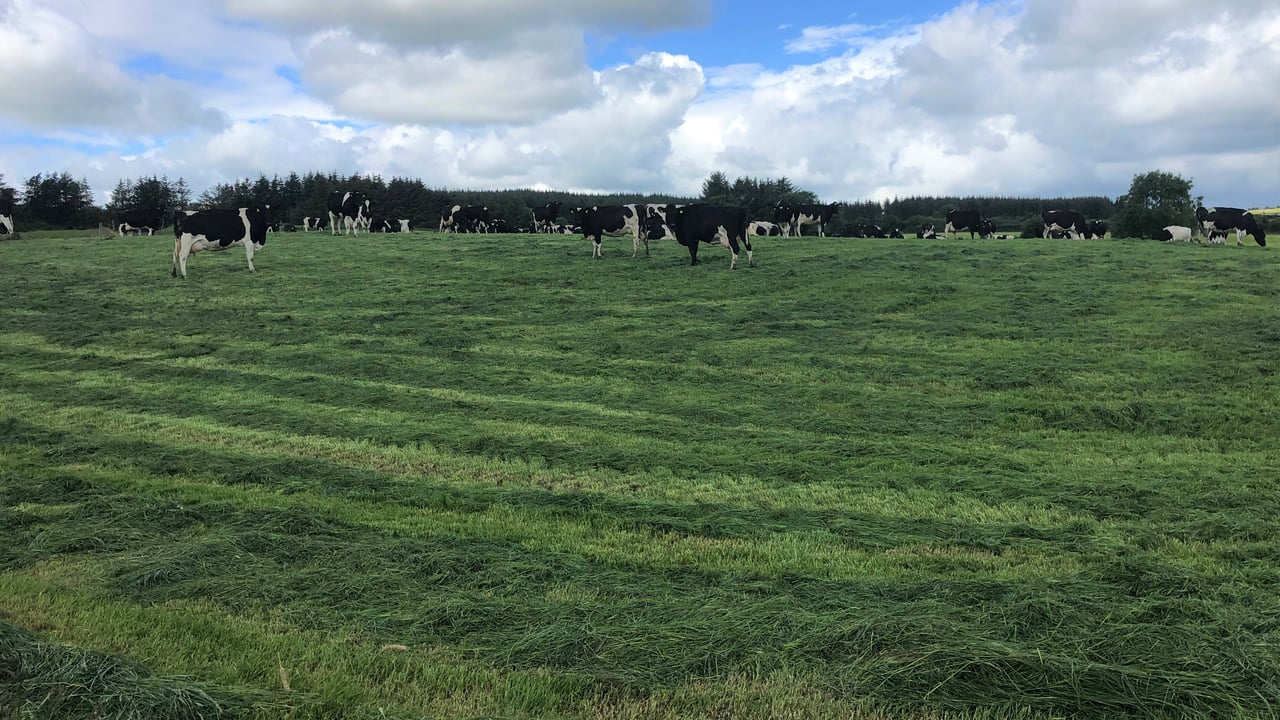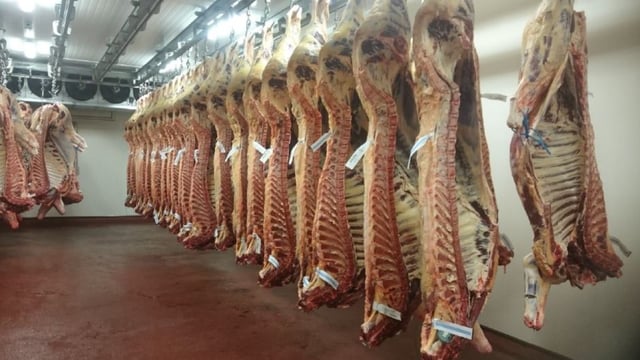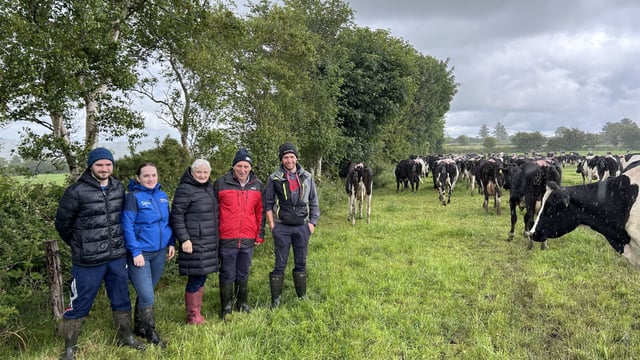Pre-mowing: The preferred option on a lot of farms this year
Over the last number of weeks, dry weather with plenty of heat in the ground saw a lot of seed go to head quite early, and pre-mowing became a popular measure to correct grass quality.
Pre-mowing is often considered an expensive way of correcting grass quality, as you are burning fuel and possibly impacting on milk protein content of the milk.
However, when grass gets out of your control - which is sometimes inevitable even if you are on the ball when it comes to grassland management - it can be hard to justify taking out every paddock for bales.
The idea of pre-mowing is that you keep the grass in the rotation, encourage the cows to eat all the stem, and maintain optimal residuals to correct the quality for the following rotation.
Many reports from across the country and particularly down the south was that there were plenty of farmer pre-mowing paddocks in the last rotation and - with the rain received in the last 10 days - this decision seemed to work favourably.
Reports from farmers indicate that while your milk protein content gets knocked back a small bit, the option to pre-mow rather than take out bales is often a preferred option when grass growth is finding it difficult to keep up.
When farmers are only above the 160kg of dry matter (DM)/livestock unit (LU) and there is little signs of strong grass growth to come, yet one or two paddocks are too strong and are beginning to stem, pre-mowing can be a great option.
Topping is another option, but the difference between topping and pre-mowing is that topping will lead to grass wastage whereas with pre-mowing, cows are eating the majority of the paddock.
Pre-mowing seems to be more fashionable over the last number of weeks as - due to low moisture in the soil prior to the arrival of rain - the grass plant was under a bit of stress and the seed was beginning to head a bit earlier than usual which is hard to naturally control through grazing.
However, with rain in recent days, there may be less farmers pre-mowing and any surpluses should try to be taken out through surplus bales.
The important thing at this time of the year is to maintain pre-grazing yields of 1,400kg DM/ha, and a grazing rotation of about 21-22 days is advised to achieve this when growth rates are about 65-70kg DM/ha/day.
Pre-mowing is where the grass in the paddock is mowed and then cows are allowed in to graze the mowed grass.
This technique can be used on paddocks that have gone too strong or that have a large amount of stem present, although I rather it not used in this vein as you are taking away the cow's freedom of choice.
Pre-mowing should be used in the same way as topping, to correct grass quality and reduce the amount of stem but shouldn't be an excuse to let covers get out of hand.
This method is an expensive way of managing and correcting grass and it also takes away the cows’ choice of what grass they eat.
Cows are selective grazers, meaning they will choose to eat the lush, high-quality grass over the stemmy, low-quality grass.
Taking away a cow’s freedom of choice will more than likely hinder their milk production, and in particular the protein content of the milk.
Farmers need to be careful that they don't pre-mow too many paddocks in the rotation, so milk solids don't take a huge hit, but aiming for one or two in the rotation should not affect solids production too much as the cows' intake will be increased.
However, it is better than leaving cows into high covers where they will potentially leave 20% of the grass, leading to poor residuals and subsequent growth recoveries.
Pre-mowing can also increase production, providing there is not an overload of stem in the paddock, as it will increase intakes as the grass is readily available to the cow.
This method works well if paddocks have gone too strong and you are looking to ensure that grass doesn’t run out while correcting quality and ensuring god residuals are achieved.
However, if grass is plentiful on the farm and there is no fear of running out, mowing and baling the paddock is the ideal option.





